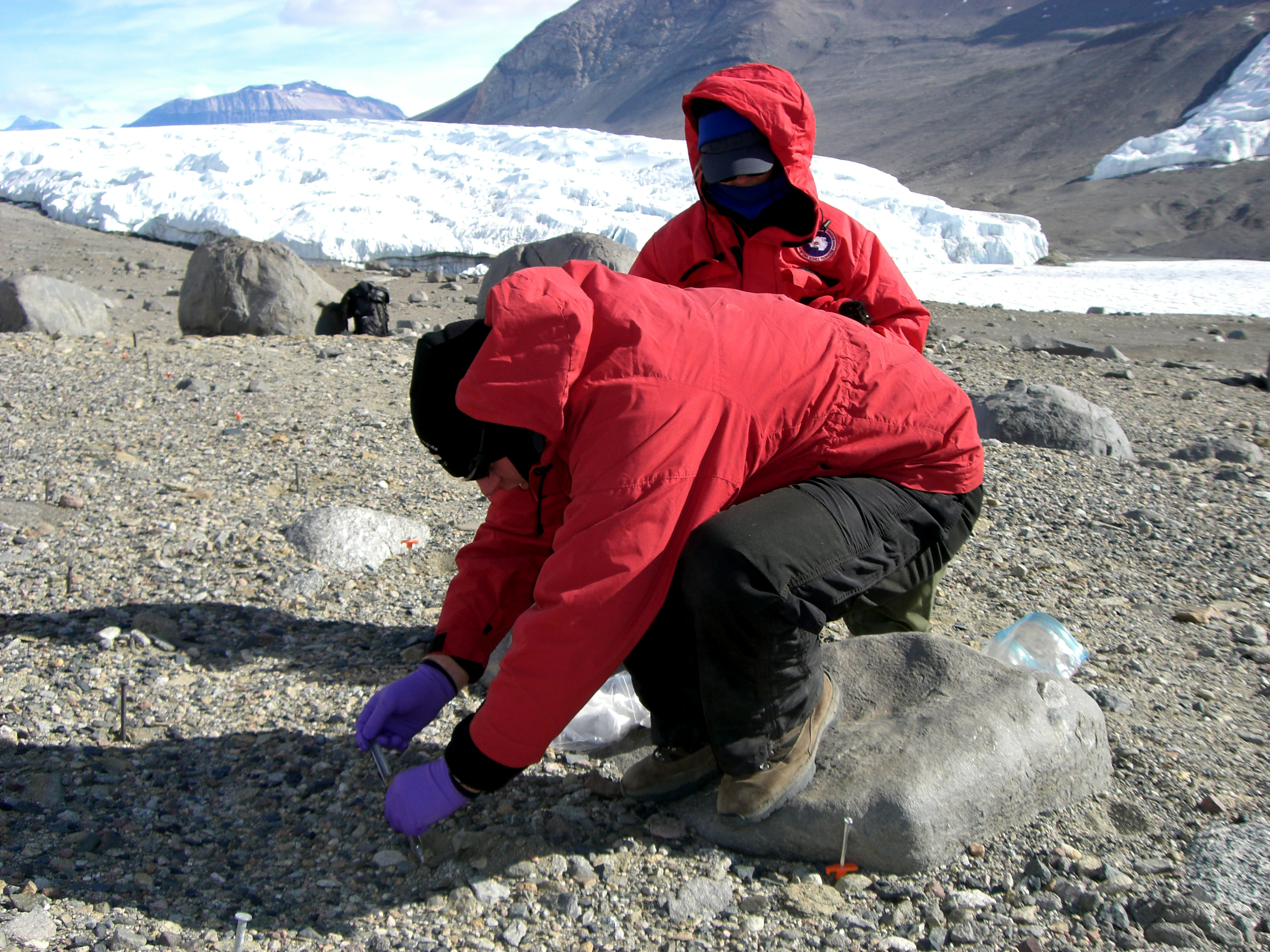 Diana Wall, director of the School of
Global Environmental Sustainability at Colorado State University, assists
Brigham Young University associate professor Byron Adams in collecting soil
samples near Lake Bonney, Taylor Valley, Antarctica. The researchers, who were
part of the McMurdo Dry Valleys Long Term Ecological Research (LTER) project
team, funded by the National Science Foundation (NSF), will take the samples
back to the Crary Lab at McMurdo Station to analyze them for their microbial
and metazoan diversity.
Diana Wall, director of the School of
Global Environmental Sustainability at Colorado State University, assists
Brigham Young University associate professor Byron Adams in collecting soil
samples near Lake Bonney, Taylor Valley, Antarctica. The researchers, who were
part of the McMurdo Dry Valleys Long Term Ecological Research (LTER) project
team, funded by the National Science Foundation (NSF), will take the samples
back to the Crary Lab at McMurdo Station to analyze them for their microbial
and metazoan diversity.
Following their study, the LTER
researchers published a report in which they described a nematode worm they
found that could withstand its cold Antarctic climate by creating a sort of
antifreeze.
 Bishwo Adhikari, a graduate student at
Brigham Young University (BYU), sets up equipment at one of the McMurdo Dry
Valleys Long Term Ecological Research (LTER) project field sites near Lake
Fryxell, Taylor Valley, Antarctica. The LTER program is funded by the National
Science Foundation (NSF). Following their study, the LTER researchers published
a report in which they described a nematode worm they found that could
withstand its cold Antarctic climate by creating a sort of antifreeze.
Bishwo Adhikari, a graduate student at
Brigham Young University (BYU), sets up equipment at one of the McMurdo Dry
Valleys Long Term Ecological Research (LTER) project field sites near Lake
Fryxell, Taylor Valley, Antarctica. The LTER program is funded by the National
Science Foundation (NSF). Following their study, the LTER researchers published
a report in which they described a nematode worm they found that could
withstand its cold Antarctic climate by creating a sort of antifreeze.
When water inside a living thing
freezes, ice crystals pierce cell membranes and kill them (which causes
frostbite). But the nematode creates a protein that probably prevents the ice
from forming sharp crystals or coats them so they don't puncture anything.
Identifying the genes the worm uses to kick in its antifreeze system could have
potential in future research such as engineering frost-resistant crops.
The researchers also reported that when
its environment runs dry, the nematode dries itself out and goes into suspended
animation until liquid water brings it back to life. Adams says this unique
genetic response to its environment indicates the nematode will likely flourish
as Antarctica gets wetter due to climate change, while other nematode species
diminish.
The samples collected and data generated
for this research were done under the auspices of the McMurdo Dry Valleys LTER
(under NSF grant OPP 98-10219) and administered under NSF's Office of Polar
Programs. To read more about this study, see the BYU news release BYU study:
How an Antarctic worm makes antifreeze and what that has to do with climate
change.
(Date of Image: 2006)
Credit: Breana Simmons, Colorado State
University







No comments:
Post a Comment